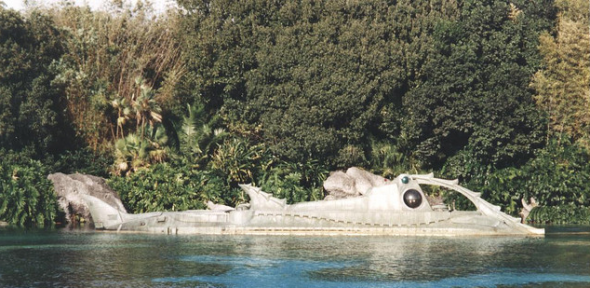Complexities
Few would deny: both Submarine Voyage at Disneyland and Magic Kingdom’s 20,000 Leagues Under the Sea were truly beasts to operate. There were a number of reasons.
1. LOADING
Because the submarines had guests seated below water level, loading and unloading was a lengthy process, though varied between coasts. In California, the 38 passenger subs were accessed via a tightly wound spiral staircase with a low overhang. All 38 guests needed to exit before a new crew could board, leading to a long turnover between groups.

In Florida, the larger, 40 passenger subs (blueprint above) were accessed via a straight set of steps, and dual stairways on each end allowed one group to exit as another boarded. Even if Florida’s more efficient system sped up the process, in both cases, the ride was relatively difficult to load and unload, and that lead to long waits right up until boarding.
2. CAPACITY
Theoretical capacity for 20,000 Leagues (running 40 person vehicles) hovered around 200 people per submarine per hour. During peak times, up to nine subs could be on the circuit, giving the ride a realistic operating capacity of 1400 – 1500 guests per hour. But on a normal day, only six subs would be in use, yielding a maximum hourly capacity of around 1200, and a realistic capacity of less – quite low for a ride operating at the most-attended theme park on Earth, and about on par with Test Track. In comparison, Splash and Space Mountain are both designed to handle about 2000 people per hour, with Haunted Mansion or Pirates of the Caribbean easily handling nearly 3000.
3. ACCESSIBILITY
While neither sub ride was required to provide access to individuals with mobility impairments (having been constructed before ADA accessibility laws), Disney has always tried to assure accessibility as much as possible. In the subs’ case, any guest in a wheelchair who wished to experience the attraction would be required by necessity to transfer out of their wheelchair and find a way down the stairs – not an easy task, even with friends and family to help. And there was no way Disney could change that.
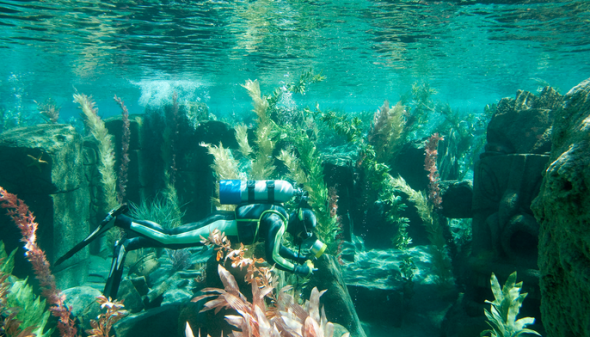
4. WEAR AND TEAR
Put simply, it’s not easy to service rides that spend their lives submerged in water. Even simple fixes to animatronics or scenery would require the complete draining of the submarine lagoons, so refurbishments were few and far between particularly at Magic Kingdom. There, the attraction is known to have gone through three major refurbishments over its 23-year lifetime. That’s a lot of years to be completely submerged in water for those animatronics. And fittingly, Disney staff spent hundreds of hours scraping scum, repairing animatronics, repainting coral, plugging holes, and more.
5. EXPENSE AND SCALE
At the end of the day, Disney balances budgets. They want the most “bang for their buck” out of every square foot of the Florida resort. 20,000 Leagues Under the Sea took up 25% of Fantasyland’s footprint (which we’ll see below) and, in return, had a relatively low hourly capacity, a comparatively enormous operational budget, huge maintenance requirements, and an ecologically questionable ride system comprised of spluttering diesel engines guzzling massive amounts of fuel.
Despite the relative complexity and costliness of the two Submarine Voyage attractions, the timeless and beloved rides seemed poised to remain highlights of their respective resorts forever. Until…
Setting sail
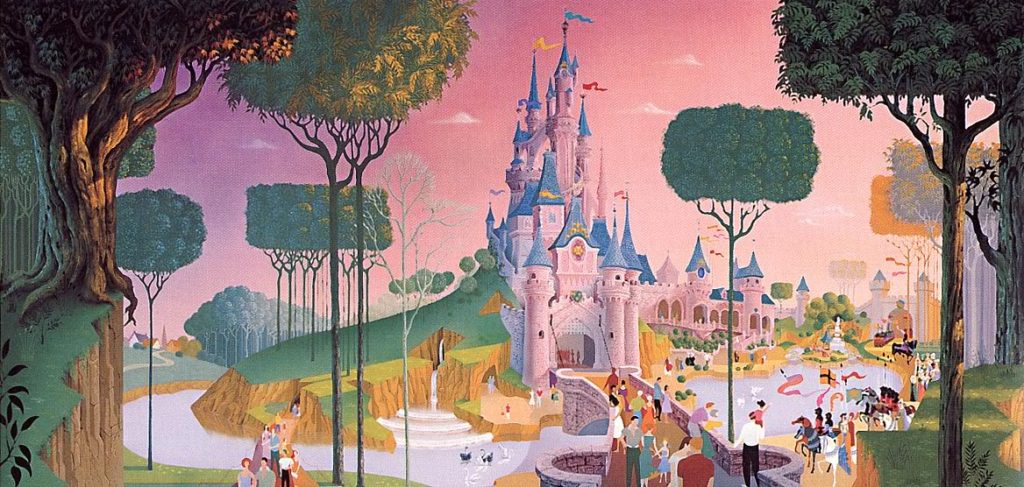
In 1992, the disastrous opening of Disneyland Paris hit hard. Across the Disney Parks, projects were closed and cancelled throughout the 1990s as then-CEO Michael Eisner seemed to abandon his ambitious scale of the “Ride the Movies” era and instead insisted on cost-cutting measures that have lasting impacts even today. Suddenly, the two submarine rides were financial liabilities not worth their cost.
On September 5, 1994 – twenty-three years after its debut – Magic Kingdom’s 20,000 Leagues Under the Sea closed for an unexpected and unannounced “temporary refurbishment.” Allegedly, Disney intended to use this time to locate a corporate sponsor for the attraction (at a time when sponsors were dropping like flies at Epcot), no doubt hoping to recoup some of the loss of the expensive-to-operate-and-maintain ride.
Apparently, they couldn’t find one. In early 1996, Disney announced that the closure a year and a half prior would remain permanent. While unthinkable today, the move was pretty in line with the Disney Parks of the mid-’90s, when – after Disneyland Paris – the parks were no longer viewed as an expanding revenue stream, but a shrinking one. The complex issues with 20,000 Leagues had become too much for the budget-conscious Disney Parks, and it was simply the most obvious attraction to cut. Guests didn’t have a last ride, or a chance to say goodbye. Instead, they went a year and a half assuming the worst, and were proved right.
Buried
After sitting idly in the lagoon for years, the submarines were pulled from the water and moved backstage at Walt Disney World. There, their portholes were popped out and sold at the Disney Store for $125 a piece.
Two of the subs were sent to Castaway Cay, the private island Disney stops at along its Disney Cruise routes. There, the Nautiluses were sunk in a snorkeling lagoon and covered with rope so that oceanic organisms and creatures could grow along its exterior.
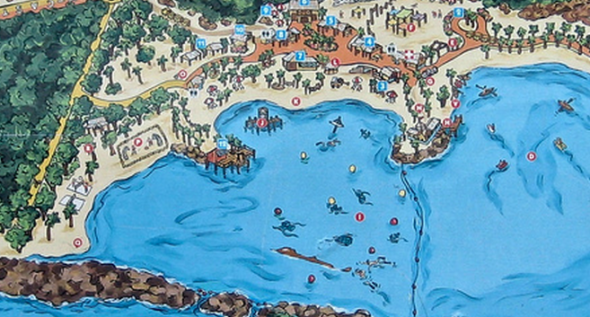
One of the subs is still there, so any guest visiting Castaway Cay on a Disney Cruise can snorkel out to it and examine just how massive the 40-person ride vehicle is. (But be warned: the enormous sub is located quite a way off the shore in a distant corner of the acres-large snorkeling area, so it’s an exhausting trip to see it, best undertaken only by skilled swimmers.)
Most of the subs were auctioned off to a scrap yard, where the Jules Verne ornamentation was picked off the fiberglass shells, with the remnants reportedly crushed and buried the landfill.
Replacing a classic
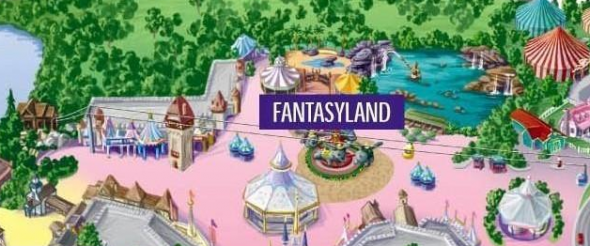
Most sadly, the lagoon in Fantasyland remained for years as a stark reminder of what once was. The 20,000 Leagues loading dock became a character greeting location with large crates disguising the ride’s landing.
Then, a purple-rocked cavern with a cascading waterfall was built at the lagoon’s western edge, housing a meet and greet for Ariel from The Little Mermaid. As part of Ariel’s Grotto, a bronze statue of King Triton took up residence in the lagoon, his trident spraying water toward his daughter’s meet-and-greet. But it was a sad state for the massive lagoon, with the coral still visible beneath the crystal clear waves.
In July 2004, the lagoon got the same treatment as the subs: it was buried. The coral, caverns, animatronics, and expansive sets from the ride were demolished in shocking photos preserved on 20kride.com. The remaining rubble was filled in with dirt, and then concrete, with hundreds of trees planted on the empty parcel of land.
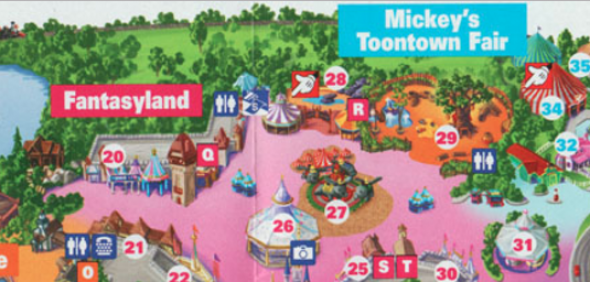
In 2005, a very small portion of the land was re-used as a playground called Pooh’s Playful Spot, meant as a companion to the Winnie the Pooh dark ride across the way (itself occupying the spot formerly held by another Lost Legend: Mr. Toad’s Wild Ride).
In 2010, Pooh’s Playful Spot closed, as well. Rather than leaving the large plot of land filled with trees, Disney decided to move forward on a massive reimagining of the park’s Fantasyland, replacing much of the original Medieval fair / tournament tent style with detailed, Wizarding World style sub-areas dedicated to Beauty and the Beast, Snow White and the Seven Dwarfs, The Little Mermaid, and classic Disney shorts.
New Fantasyland – including a Little Mermaid dark ride, Beauty and the Beast restaurant and walkthrough, and Snow White roller coaster all now occupy the enormous footprint of the 20,000 Leagues lagoon, showbuilding, and dry dock, which goes to show just how massive the ride really was. Is the land better used as New Fantasyland? Objectively, probably so. But that doesn’t help those who grew up with the ride and were mesmerized by its imagination.
By the way, 20,000 Leagues Under the Sea did get a little “Easter egg” appearance in the New Fantasyland that replaced it… The intricate rockwork meant to evoke the seaside caverns beneath Prince Eric’s castle contain a very unique natural formation hinting at another ship that met its end here. And as the comparison photo above shows, the showbuilding for Under the Sea: Journey of the Little Mermaid is almost exactly in the same position as 20,000 Leagues’, and in the same shape, too.

You’ve no doubt heard it said, “good ideas never die at Disney.” That’s probably true, because despite the closure of 20,000 Leagues Under the Sea, its ingredients and elements live on not just in Easter eggs, but in spiritual sequels. On the last page, we’ll discuss where you can get your 20,000 Leagues fix today and where the stories continue…



